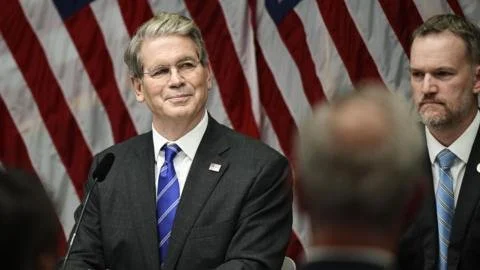Tariff Truce on the Brink: Will Trump Step In to Secure a Deal with China?
In a high-stakes diplomatic maneuver, top officials from the US and China have concluded two days of discussions labeled as “constructive,” yet the fate of the 90-day tariff truce hangs precariously in the balance. The trade negotiator for China, Li Chenggang, reported that both nations have committed to working together to extend this crucial truce, which temporarily halted some punitive trade measures. However, US Treasury Secretary Scott Bessent emphasized that any further agreement depends entirely on President Donald Trump’s approval.
Held in Stockholm, Sweden, these discussions come as the truce established in May approaches its expiration next month, threatening to rekindle the trade turmoil that saw both countries engage in escalating tariffs earlier this year. In a follow-up conversation from Air Force One, Trump noted a positive tone from the meeting but quickly relayed that he would be briefed the next day.
Since taking office, Trump has aggressively pursued tariff increases on Chinese imports, which led to retaliatory measures from Beijing. This has resulted in tariff rates skyrocketing, with Chinese goods now facing an additional 30% tariff compared to early 2023, and US goods encountering a 10% tariff in China. Without the agreement being extended by the critical August 12 deadline, tariffs could swiftly escalate once again.
“Nothing is agreed until we speak with President Trump,” Bessent cautioned, while seeking to moderate fears of renewed tension. The talks were deemed constructive, yet the US negotiators stressed that formal approval is still needed.
The two powers are at loggerheads on multiple fronts beyond tariffs, including demands for ByteDance to sell TikTok and the expedited export of essential minerals. In this latest meeting—the third since April—negotiators engaged in discussions about economic conditions, previous agreements signed by Trump and Xi Jinping, and significant issues surrounding rare earth minerals critical for technology like electric vehicles and semiconductors.
While the US Trade Representative reported progress toward narrowing the trade deficit, which was a staggering $295 billion in favor of China last year, Bessent affirmed that the US is not pursuing complete separation from China’s economy. Instead, they aim to “de-risk” specific strategic industries to ensure economic stability in US-China relations.

